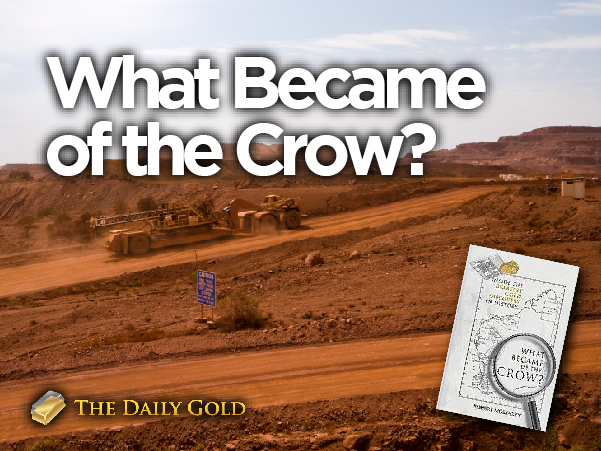What Became of the Crow? (A Book Review)

Back in 2012, I was on a property tour with Bob Moriarty.
When we got around to discussing stocks, Bob mentioned a company he thought could become the biggest thing, not just junior mining but mining in general.
Novo Resources was trading around $0.40 at the time.
Five years later, the stock surged well above $8.00 on the back of a new gold rush taking place in the Pilbara region of Western Australia.
This book tells the complete story of Novo Resources, its protagonist, Quinton Hennigh, and a cast of characters along the way, including would-be antagonists.
Charting course is the always irreverent Bob Moriarty, a secondary player in the emergence of and development of Novo Resources.
The nearly 300-page long book is beautifully organized chronologically. Readers will enjoy the story of Novo from its birth, development, and ongoing challenges to where it is today.
Alongside, one will enjoy the story of Quinton Hennigh, who Bob calls his best friend, as well as Mark Creasy, an extremely successful geologist, and prospector, sometimes protagonist, sometimes antagonist, and massive landholder in Western Australia.
Quinton’s theory of how Gold ended up in the Witwatersrand Basin in South Africa was mocked and later stolen. Shockingly, after Eric Sprott publicly credited Quinton for recognizing the potential of the Swan Zone at the Fosterville property and helping him earn over $1 Billion in NewMarket and Kirkland Lake shares, Sprott’s men tried to steal control of Novo.
While the book is a mostly glowing profile of Quinton, the author recognizes and devotes color to Quinton and Novo’s mistakes shortly after the stock hit $8.00. Also, Bob reminds us that the mineralization in Karratha coupled with Australian mining regulations has created unique challenges for Novo.
One important takeaway for investors, which also applies to Novo, is the importance of the Lassonde Curve. Discovery is the easy part, according to Bob. He reminds us of the extreme cyclicality in junior stock prices that can often be attributed to the dreaded development period between discovery and production. He argues that every resource stock can have major ups and downs.
Bob’s side commentary or unfiltered nuggets of wisdom about the mining industry, human behavior, and life are my favorite parts of the book.
My favorites include Bob’s explanation of why geologists are like hookers, his belief that the mining industry mostly consists of lying, cheating, and stealing, and that every person he met who used an initial for his first name was a pompous blowhard.
Overall, the book is well written, highly readable, and a smooth, easy read. Bob’s unique style and commentary will only add to your entertainment and enjoyment.
I complimented Bob and told him he should write more books. Go here to buy the book. You will not be disappointed.






